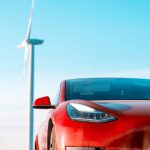Tesla has reported its latest production and delivery figures for the third quarter of 2025, signaling another substantial step forward for the electric vehicle manufacturer. Customers, investors, and industry analysts were anticipating strong results, but the release outpaced most predictions. A surge in energy storage deployments highlights diversification beyond the company’s traditional automotive operations. In the broader context, Tesla’s sustained momentum raises new questions about demand, competition, and strategy over the months ahead.
Recent data points released by Tesla echo similar patterns from prior quarters, with the Model 3 and Model Y consistently powering delivery growth. However, this quarter’s figures represent a marked increase compared to earlier periods, outstripping both internal benchmarks and external forecasts. While competitors have launched more affordable electric cars, Tesla’s higher-priced lineup continues to draw significant global interest, and the record-setting energy deployments underscore its dual focus on mobility and storage solutions. The company has shown a pattern of exceeding analyst expectations, though scrutiny around long-term margins persists.
How Did Tesla’s Key Models Perform?
For the third quarter, Tesla produced 447,450 vehicles and delivered 497,099 units globally. The majority of results stemmed from the Model 3 sedan and Model Y crossover, which together accounted for 435,826 vehicles produced and 481,166 delivered. Other offerings, like the Model S, Model X, and Cybertruck, contributed a smaller volume but reinforced Tesla’s multi-segment approach.
What Drives Tesla’s Energy Storage Success?
Tesla’s energy division logged its highest-ever quarterly deployment, reaching 12.5 gigawatt-hours of storage products. This performance marks a substantial increase in Tesla Energy’s contribution to overall business results. Reflecting on the record, a Tesla spokesperson stated,
“Our energy business continues to gain momentum as we respond to strong demand across markets.”
Expansion in energy storage complements Tesla’s vehicle sales by providing another route for sustainable growth.
How Do Analysts View the Latest Results?
Industry analysts forecasted impressive numbers for Tesla’s deliveries, yet the published results surpassed almost all projections. Some Wall Street experts had anticipated lower volumes, estimating a range in the mid-460,000s, while the consensus was approximately 448,000 units. Highlighting the difference, Tesla commented,
“We are pleased to exceed delivery estimates and achieve milestones that reflect our ongoing operational efficiency.”
Investors now await further details with the company’s upcoming financial report later in October.
Tesla’s Q3 2025 performance consolidates an established trend of beating both market and internal expectations, yet questions remain over sustainability and pricing as the electric vehicle market increases in complexity. For consumers and observers, the significant growth in both transportation and energy solutions demonstrates the company’s capacity to pivot between sectors as conditions evolve. For those tracking Tesla closely, upcoming earnings calls and market feedback will offer deeper context on profitability, strategy, and longer-term trajectories. While direct vehicle sales remain at the heart of operations, the rise of the energy business invites new considerations regarding the company’s footprint and market value. Careful observation of how Tesla navigates pricing, supply chain risks, and growing competition will be essential for industry participants aiming to understand or replicate this level of performance.










